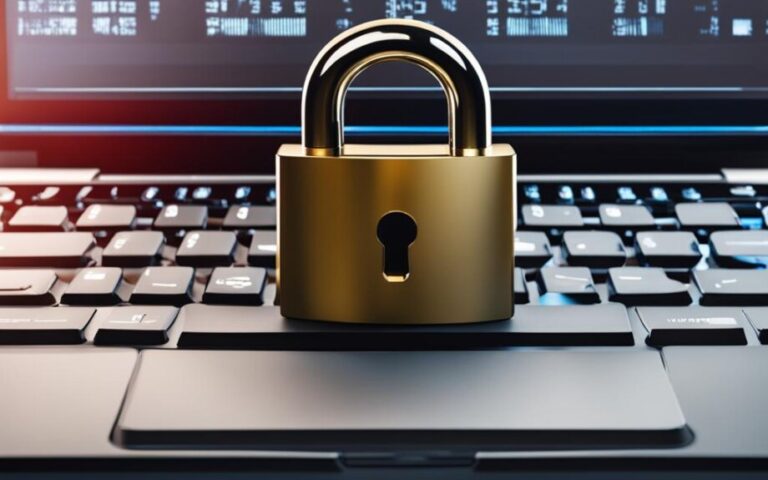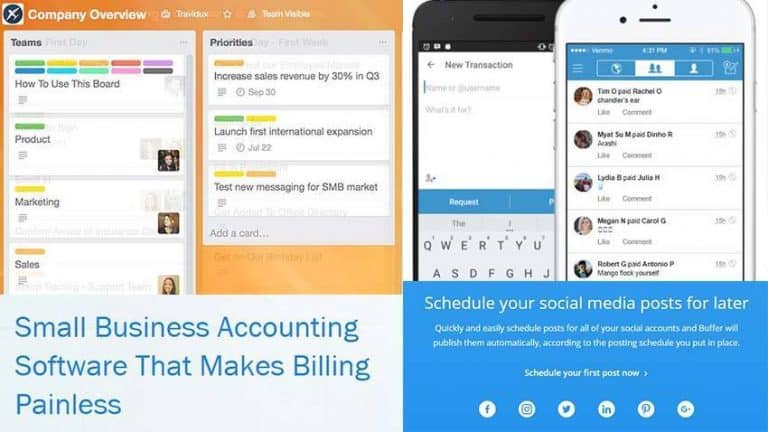If you’re looking for a way to stay safe and secure while engaging in online activities, a virtual private server (VPS) is your answer. With a VPS, you can enjoy enhanced privacy, protection from cyber threats, and an overall safer online experience. In this step-by-step guide, we will show you how to effectively use a VPS for secure online activities, so you can browse, shop, and communicate online with peace of mind.
- Understand the basics of a VPS and how it differs from other hosting options
- Choose a reliable VPS provider that meets your security needs
- Set up your VPS and configure security settings for optimal protection
- Implement virtual private networks (VPNs) for an additional layer of security
- Browse the internet safely and securely with your VPS
- Keep your VPS and software up to date for maximum security
Whether you’re concerned about identity theft, cyber attacks, or online surveillance, using a VPS for secure online activities is the right choice. Let’s get started on creating a safer online presence for you today.
What is a Virtual Private Server (VPS)?
If you’re looking for a secure hosting option for your online activities, you may have come across the term “virtual private server” or VPS. But what exactly is a VPS, and how does it differ from other hosting options?
Simply put, a VPS is a virtual machine that runs on a physical server, providing you with your own private environment to host your website or application. With a VPS, you have more control and resources than shared hosting, but at a lower cost than dedicated hosting.
Unlike shared hosting, where multiple users share the same server and its resources, a VPS ensures that your server resources are dedicated solely to your website or application, eliminating the risk of other users affecting your performance or security.
In addition, a VPS allows you to install custom software and applications, configure security protocols, and have root access to the server, giving you more flexibility and control over your hosting environment.
The Benefits of Using a VPS
Using a VPS for your online activities offers numerous benefits, including:
- Enhanced security: With your own private environment, you have better control over security measures and can implement additional measures like firewalls and VPNs.
- Better performance: Since you have guaranteed server resources, your website or application will run more smoothly and quickly, even during high traffic periods.
- Increased scalability: With a VPS, you have the ability to scale your resources up or down as needed, making it easier to handle sudden spikes in traffic or growth in your business.
- Customizability: Unlike shared hosting, you can customize your server settings and software, giving you more control over your hosting environment.
Now that you understand what a VPS is and its benefits, it’s time to select a reliable VPS provider.
Choosing the Right VPS Provider
When selecting a virtual private server (VPS) provider, it is important to consider several key factors to ensure your online activities remain secure and perform well. Here are some crucial factors to keep in mind:
| Factor | Description |
|---|---|
| Reputation | Research the VPS provider’s reputation in the industry by reading customer reviews and evaluations from reputable sources. A reputable VPS provider will have a solid track record of providing reliable and secure services. |
| Security Measures | Choose a VPS provider that implements strong security measures to protect your data, such as firewalls, intrusion detection systems, and regular security updates. |
| Customer Support | Select a VPS provider that offers excellent customer support, with responsive and knowledgeable representatives available to assist you 24/7. |
| Performance | Ensure the VPS provider can handle your online activities with minimal lag time or downtime, providing sufficient bandwidth and storage capacity for your needs. |
By taking the time to research and compare different VPS providers, you can make an informed decision and select the best option for your secure online activities. Remember, choosing the right VPS provider is essential for a smooth and secure experience.
Setting Up Your VPS
Now that you have selected a VPS provider, it’s time to set up your virtual private server. Follow these steps to ensure a smooth and secure setup:
- Select the server location: When setting up your VPS, choose a server location that is closest to your physical location. This will ensure faster connection speeds and better performance.
- Select the operating system: Choose the operating system that best suits your needs. Linux-based systems are generally more secure and efficient than Windows-based systems.
- Configure security settings: Set up security measures such as firewalls, user access controls, and anti-virus software to protect your VPS from unauthorized access.
Once your VPS is set up, you will need to connect to it through a remote desktop connection. This process will vary depending on your operating system, so be sure to follow the instructions provided by your VPS provider.
It’s important to note that if you don’t have experience with server management, you may want to consider hiring a professional to help set up your VPS. This will ensure that it is properly configured and optimized for your specific needs.

By following these steps to set up your VPS, you can ensure that it is secure, optimized, and ready to support your online activities.
Securing Your VPS
Securing your virtual private server (VPS) is a crucial step in safeguarding your online activities. By implementing appropriate security measures, you can protect your data and minimize the risk of unauthorized access.
Here are some important steps to secure your VPS:
- Enable Firewall: Setting up a firewall on your VPS is the first line of defense against potential threats. A firewall filters incoming and outgoing traffic based on predefined rules, blocking any unauthorized access. You can use firewall software like UFW or FirewallD to set up a firewall on your VPS.
- Use Secure Protocols: When accessing your VPS, use secure protocols like SSH instead of unencrypted protocols like telnet. Secure protocols encrypt your communication, making it difficult for unauthorized users to intercept and decipher your data.
- Update Software: Keeping your software up to date is crucial in maintaining the security of your VPS. Regularly update your operating system, web server software, and other applications to receive security patches and bug fixes.
- Implement Strong Passwords: Strong passwords are essential in preventing unauthorized access to your VPS. Use complex passwords with a combination of letters, numbers, and symbols. Avoid using easily guessable passwords like “password” or “123456”.
- Disable Unused Services: Disable any unused services and ports on your VPS to minimize potential vulnerabilities. If you don’t need a particular service running, turn it off to reduce the attack surface of your VPS.
Implementing these security measures can go a long way in securing your VPS and protecting your online activities.
Configuring VPN on Your VPS
Virtual private networks (VPNs) provide an additional layer of security to your online activities. By encrypting your internet connection and hiding your IP address, you can browse the web anonymously and prevent hackers and cybercriminals from intercepting your data.
To configure a VPN on your VPS, follow these steps:
- Choose a VPN provider that meets your security needs. Look for a provider that offers robust encryption, a variety of server locations, and no-logs policy.
- Set up an account and download the VPN client on your local machine.
- Log in to your VPS and connect to it using SSH.
- Install the VPN software on your VPS. You can use a package manager like apt or yum to install the necessary packages.
- Configure the VPN on your VPS by editing the configuration file. The location of the configuration file may vary depending on the VPN provider and server location.
- Start the VPN service on your VPS and test the connection.
- Connect to the VPN server from your local machine using the VPN client.
- Verify that your connection is secure by checking your IP address and DNS leak test.
Once you have configured the VPN on your VPS, you can connect to it using any device that supports VPN, including your smartphone, tablet, or laptop. Enjoy secure and anonymous browsing on all your devices.
Safe Online Browsing with Your VPS
Now that you have set up and secured your virtual private server (VPS), it’s time to explore safe online browsing practices. Using your VPS can greatly enhance your online privacy and security, but it’s important to take additional precautions when browsing the web.
Use Secure Browsers
One of the most effective ways to ensure safe online browsing is to use a secure browser. Popular options include Google Chrome, Mozilla Firefox, and Apple Safari. These browsers offer built-in security features such as pop-up blockers, anti-phishing tools, and automatic updates to protect against the latest security threats.
Avoid Suspicious Websites
When browsing the web, it’s important to avoid suspicious websites that may contain malware or phishing attempts. These websites may appear legitimate but can pose a serious threat to your online security. Be wary of websites that ask for personal information or prompt you to download unfamiliar software.
Utilize Additional Security Tools
In addition to using a secure browser, there are several other security tools you can utilize to enhance your online safety. These include virtual private networks (VPNs), ad blockers, and anti-virus software. VPNs encrypt your internet traffic, making it more difficult for hackers to intercept your data. Ad blockers can help prevent malicious ads from appearing on your screen, while anti-virus software can detect and remove viruses and malware from your computer.
By following these safe browsing practices and utilizing the security tools available to you, you can ensure a secure online experience with your VPS.
Additional Tips for Secure Online Activities with VPS
Now that you have your virtual private server (VPS) set up and secured, there are a few additional tips and tricks you can follow to ensure maximum protection for your online activities.
Regular Backups
One important step to keep in mind is regularly backing up your data. This can help you recover any lost or corrupted files in the event of a security breach or technical issue. Make sure to store backups in a separate location from your VPS for added security.
Monitor System Logs
To stay on top of any potential security threats, it’s important to regularly monitor your system logs. This can help you identify any suspicious activity and take action accordingly. Keep an eye out for any unusual login attempts or usage patterns.
Keep Software Up to Date
Another key tip is to keep all software on your VPS up to date. This includes both the operating system and any applications or plug-ins you may be using. Software updates often contain security patches and bug fixes, so staying current can help prevent any vulnerabilities from being exploited.
Use Two-Factor Authentication
Two-factor authentication adds an extra layer of security to your VPS login process. This requires you to provide a second form of authentication, such as a code sent to your phone, in addition to your password. Many VPS providers offer this as an option, so be sure to check if it’s available and consider implementing it for added security.
Limit Access to Your VPS
Finally, it’s important to limit access to your VPS as much as possible. Only provide login credentials to trusted individuals and set up different levels of access for different users if necessary. This can help minimize the risk of unauthorized access or data breaches.

By following these additional tips, you can further enhance the security of your online activities when using a VPS. Stay vigilant and take all necessary precautions to protect your data and privacy.
Conclusion
In today’s digital age, the importance of securing your online activities cannot be overstated. Utilizing a virtual private server (VPS) is an effective way to enhance your cybersecurity and protect your privacy online.
By following the step-by-step guide provided in this article, you can set up and secure your VPS to ensure safe online browsing, anonymous internet activity, and protection against potential threats.
Remember to choose a reliable VPS provider, implement strong security measures, and stay up to date with the latest best practices to maintain a secure online presence.
Whether you are an individual or a business, safeguarding your online activities is crucial in today’s interconnected world. Don’t wait to take action – start using a VPS for secure online activities today.






